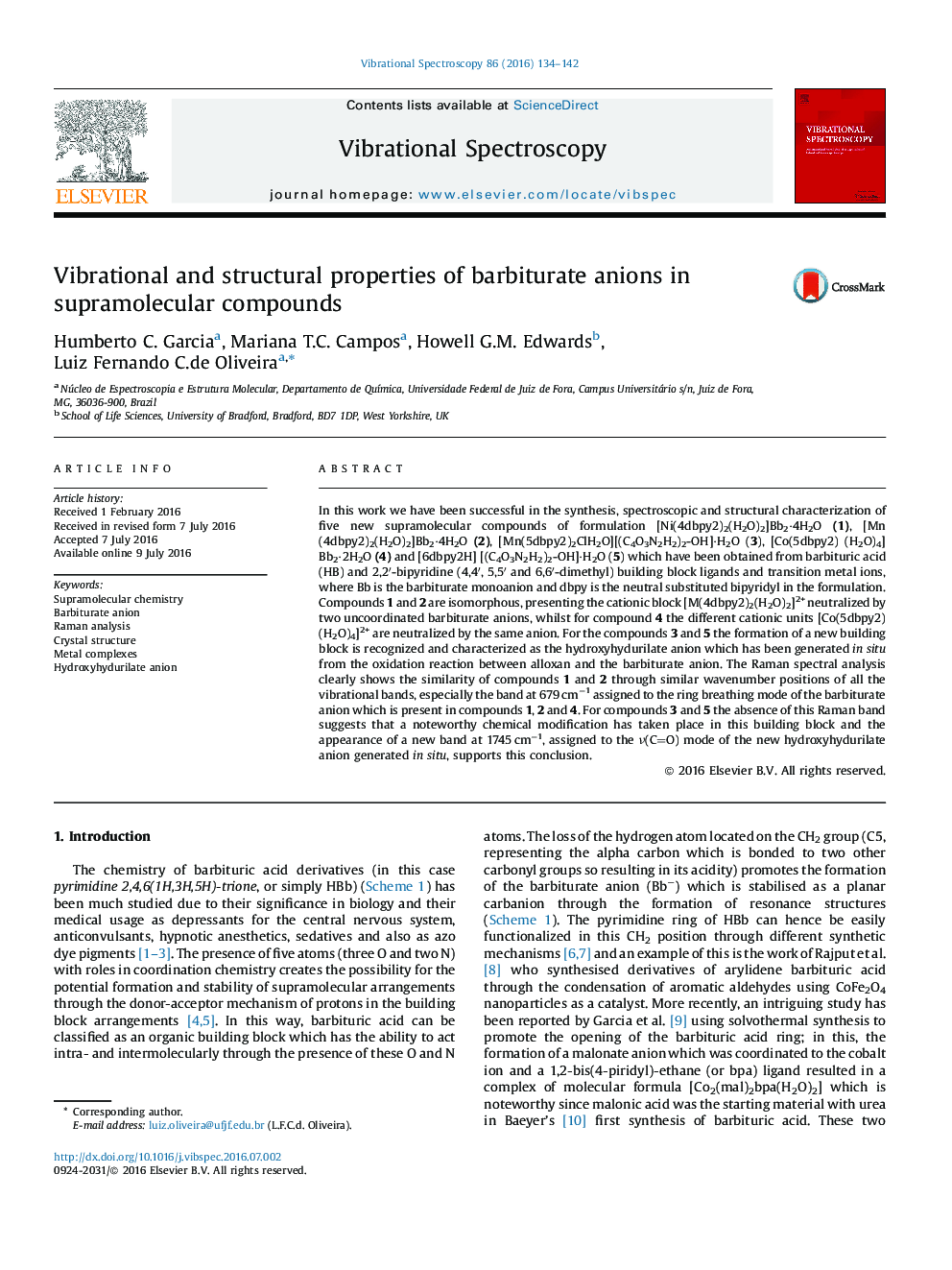| کد مقاله | کد نشریه | سال انتشار | مقاله انگلیسی | نسخه تمام متن |
|---|---|---|---|---|
| 1249513 | 1495973 | 2016 | 9 صفحه PDF | دانلود رایگان |
In this work we have been successful in the synthesis, spectroscopic and structural characterization of five new supramolecular compounds of formulation [Ni(4dbpy2)2(H2O)2]Bb2·4H2O (1), [Mn(4dbpy2)2(H2O)2]Bb2·4H2O (2), [Mn(5dbpy2)2ClH2O][(C4O3N2H2)2-OH]·H2O (3), [Co(5dbpy2) (H2O)4]Bb2·2H2O (4) and [6dbpy2H] [(C4O3N2H2)2-OH]·H2O (5) which have been obtained from barbituric acid (HB) and 2,2′-bipyridine (4,4′, 5,5′ and 6,6′-dimethyl) building block ligands and transition metal ions, where Bb is the barbiturate monoanion and dbpy is the neutral substituted bipyridyl in the formulation. Compounds 1 and 2 are isomorphous, presenting the cationic block [M(4dbpy2)2(H2O)2]2+ neutralized by two uncoordinated barbiturate anions, whilst for compound 4 the different cationic units [Co(5dbpy2) (H2O)4]2+ are neutralized by the same anion. For the compounds 3 and 5 the formation of a new building block is recognized and characterized as the hydroxyhydurilate anion which has been generated in situ from the oxidation reaction between alloxan and the barbiturate anion. The Raman spectral analysis clearly shows the similarity of compounds 1 and 2 through similar wavenumber positions of all the vibrational bands, especially the band at 679 cm−1 assigned to the ring breathing mode of the barbiturate anion which is present in compounds 1, 2 and 4. For compounds 3 and 5 the absence of this Raman band suggests that a noteworthy chemical modification has taken place in this building block and the appearance of a new band at 1745 cm−1, assigned to the ν(CO) mode of the new hydroxyhydurilate anion generated in situ, supports this conclusion.
Journal: Vibrational Spectroscopy - Volume 86, September 2016, Pages 134–142
